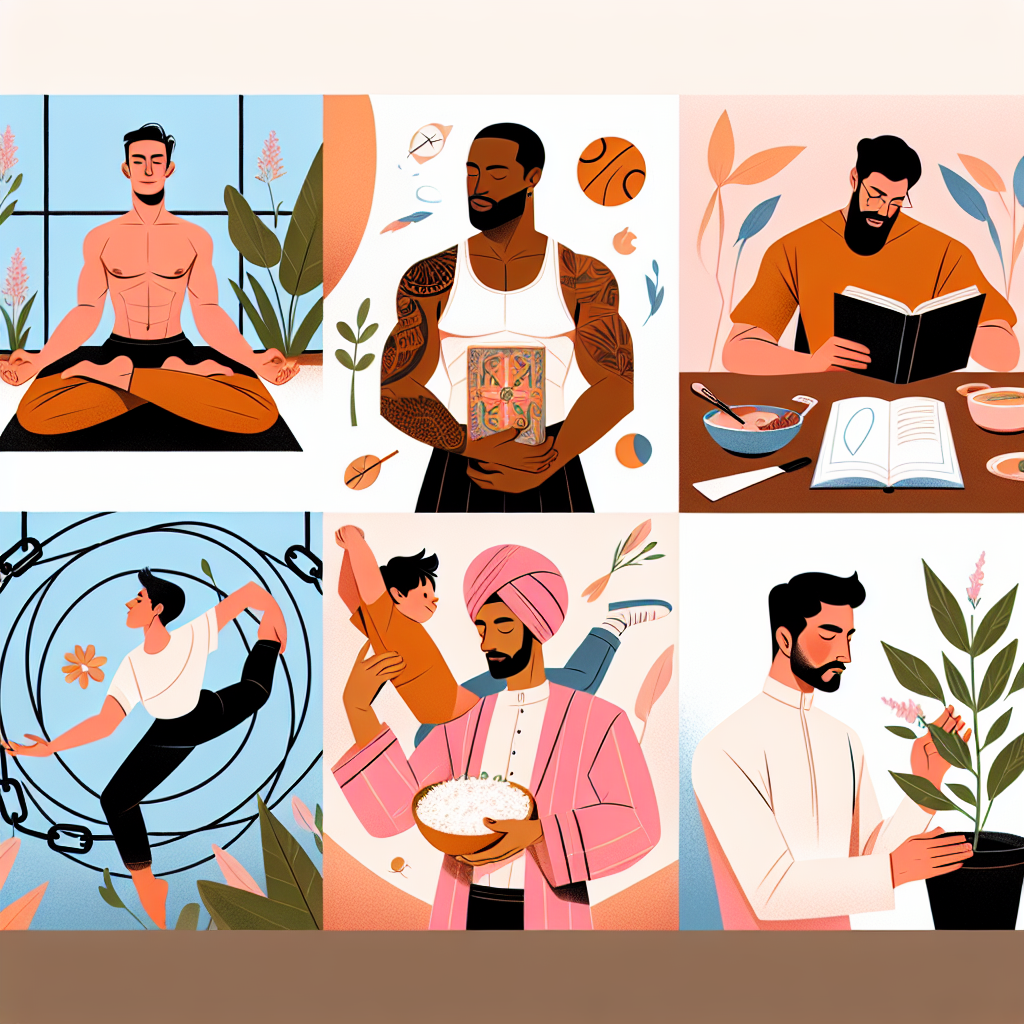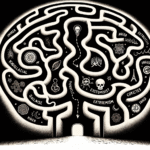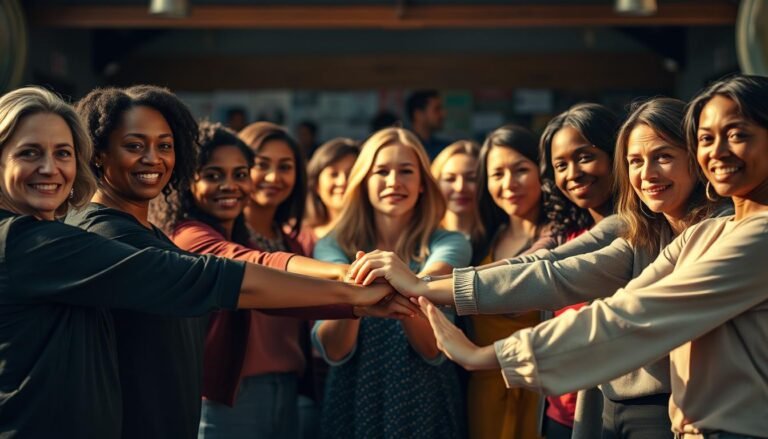
Introduction
In an era where societal norms are constantly evolving, Breaking the Mold: How Men Are Challenging Traditional Masculine Norms serves as both a clarion call and a guide for the modern man. The old ideals of masculinity—stoic, unemotional, and dominant—are giving way to a more nuanced understanding of what it means to be a man today. As we delve deeper into this cultural shift, we uncover the fascinating journeys of men from all walks of life who are not just adapting but actively reshaping the framework of masculinity.
This article explores the significance of breaking free from archaic stereotypes and highlights valuable insights from those leading the charge. Whether it’s in their personal relationships, the workplace, or broader societal contexts, these stories of transformation encourage readers to rethink their conceptions of manhood.
The Pressure of Traditional Masculinity
Traditional masculine norms have cast a long shadow, dictating how men should act, think, and feel. The expectations are often unrealistic and can lead to detrimental mental health outcomes. Psychologists have linked adherence to these outdated notions with higher rates of depression, anxiety, and even substance abuse among men.
Masculine Norms and Their Impacts
| Norms | Effects |
|---|---|
| Emotional Resilience | Suppressed emotions, leading to mental health issues |
| Physical Toughness | Increased risk of injury and unhealthy competition |
| Economic Provider | Stress and anxiety due to financial pressure |
Maintaining these expectations can be detrimental not just to individual men but also to their relationships, communities, and families. Recognizing this, the next generation of men is increasingly prioritizing emotional intelligence, vulnerability, and authenticity in their lives.
Redefining Strength: Vulnerability as a Superpower
Case Study: Men’s Support Groups
One telling example of the shift toward emotional openness can be seen in men’s support groups that encourage sharing of feelings, struggles, and accomplishments. Organizations like "The Mankind Project" engage men in transformative discussions where vulnerability is not just accepted but celebrated.
Analysis
By creating safe spaces for emotional expression, these groups break the mold of traditional masculinity. Participants leave with a greater sense of self and emotional intelligence, underscoring that true strength lies in vulnerability. This model proves that when men embrace their emotional side, they contribute positively to their well-being and that of those around them.
The Evolution of Fatherhood
Breaking the Mold: How Men Are Challenging Traditional Masculine Norms extends beyond individual expression; it influences the very fabric of family life. The contemporary fatherhood model celebrates active participation in nurturing roles, defying the stereotype of the distant, breadwinning father.
Case Study: Stay-at-Home Dads
Australia’s "Dads4Kids" initiative provides critical insights into the evolving role of fathers. Many men are choosing to be stay-at-home dads, passionately engaging in child-rearing, thus challenging the traditional breadwinner model.
Analysis
This shift has far-reaching implications, including improved child development outcomes and stronger family bonds. When fathers take on nurturing roles, they enrich their children’s lives, demonstrating that emotional availability is just as crucial as financial support.
Navigating the Workplace: A New Era of Masculinity
As workplaces grow increasingly diverse and equitable, so too do the expectations placed on men. Traditional workplaces often privilege "male" traits such as aggression and competitiveness. However, we now see the rise of collaborative and inclusive environments where emotional intelligence is an asset.
Case Study: Male Allies in Gender Equality Initiatives
The "HeForShe" campaign led by UN Women focuses on encouraging men to advocate for gender equality. Male allies—including CEOs, team leaders, and everyday workers—actively engage in discussions around workplace equity and the dismantling of toxic masculine norms.
Analysis
These initiatives highlight the growing recognition that fostering an inclusive workplace benefits everyone. With men taking on the mantle of advocates for gender equality, this trend is a stark example of Breaking the Mold: How Men Are Challenging Traditional Masculine Norms in the corporate world.
Media Representation: Challenging Stereotypes through Storytelling
In our age of interconnectedness, media plays a crucial role in reshaping perceptions about masculinity. From television shows that feature emotionally complex male characters to films that challenge the heroic archetype, storytelling has emerged as a powerful tool for change.
Case Study: Pop Culture Breakouts
Shows like "This Is Us" and films like "Moonlight" have portrayed male characters with depth and vulnerability, showing the public that men can be just as complex as women. These narratives not only normalize vulnerability but also inspire discussions around mental health, relationships, and personal growth.
Analysis
By portraying men as multi-faceted beings rather than one-dimensional archetypes, media has a unique ability to influence public opinion. This shift reflects the ongoing work of Breaking the Mold: How Men Are Challenging Traditional Masculine Norms through creative expression.
The Role of Education: Teaching Emotional Fluency
Our education systems are adapting to center emotional intelligence alongside academics. Schools are integrating social-emotional learning (SEL) programs that emphasize empathy, self-awareness, and relationship skills.
Case Study: SEL Programs in Schools
Many schools across the globe have begun implementing SEL curriculum, allowing boys and young men to explore their emotions and social skills in a safe environment. Initiatives like the "Boys to Men" program equip young boys with the tools needed to break free from traditional masculine constraints.
Analysis
By educating young boys in emotional fluency, we prepare the next generation to engage meaningfully with their emotions and those of others. This foundational change can have a transformative impact on future generations, reinforcing the tenets of Breaking the Mold: How Men Are Challenging Traditional Masculine Norms.
Collaboration and Support: Building Communities
Engaging with and supporting one another is essential for men seeking to redefine masculinity. Various communities—both online and offline—offer spaces for men to connect, learn, and grow.
Case Study: Men’s Retreats and Workshops
Retreats such as the "Men’s Weekend" offer immersive experiences where men can explore their feelings, confront social conditioning, and learn from one another. These workshops foster a sense of belonging and encourage personal growth.
Analysis
The communal aspect underscores the importance of solidarity among men who are striving to break the mold. By participating in these retreats, men find accountability and support, which are vital for challenging long-held beliefs about masculinity.
Conclusion
The narrative around masculinity is shifting dramatically. Breaking the Mold: How Men Are Challenging Traditional Masculine Norms is a movement marked by vulnerability, connection, and authenticity. As we have seen through various case studies, men worldwide are stepping up to reject outdated stereotypes in favor of a richer, more empowering identity.
As we move forward from this examination, we encourage readers to embrace the ongoing transformations around masculinities. Let’s leverage these insights into our lives and communities, yielding a future where emotional openness leads to stronger connections, healthier families, and more vibrant communities.
FAQs
1. What does "breaking the mold" mean in the context of masculinity?
Breaking the mold refers to the active challenge and rejection of traditional masculine norms that limit emotional expression and personal fulfillment, allowing for a broader, healthier definition of what it means to be a man.
2. How can men embrace emotional vulnerability in their lives?
Men can embrace emotional vulnerability by seeking support from peers, engaging in activities that promote emotional intelligence, and practicing open communication in relationships.
3. Why is redefining masculinity important for society?
Redefining masculinity is crucial because it promotes mental health, nurtures healthier relationships, and encourages a culture of empathy and understanding, benefiting everyone in society.
4. Are there resources for men looking to challenge traditional masculine norms?
Yes! Resources include support groups, workshops, online forums, and literature focused on emotional intelligence and modern masculinity, offering practical tools for change.
5. How can parents raise boys who challenge traditional masculine norms?
Parents can encourage emotional expression, model healthy relationships, and promote interests that may not conform to traditional gender roles, nurturing a well-rounded view of masculinity in their children.
By exploring the facets of Breaking the Mold: How Men Are Challenging Traditional Masculine Norms, we become part of a larger conversation about what it means to be a man today. Let’s continue to foster environments that celebrate authenticity, personal growth, and shared humanity, leading to a brighter, more compassionate future.

















